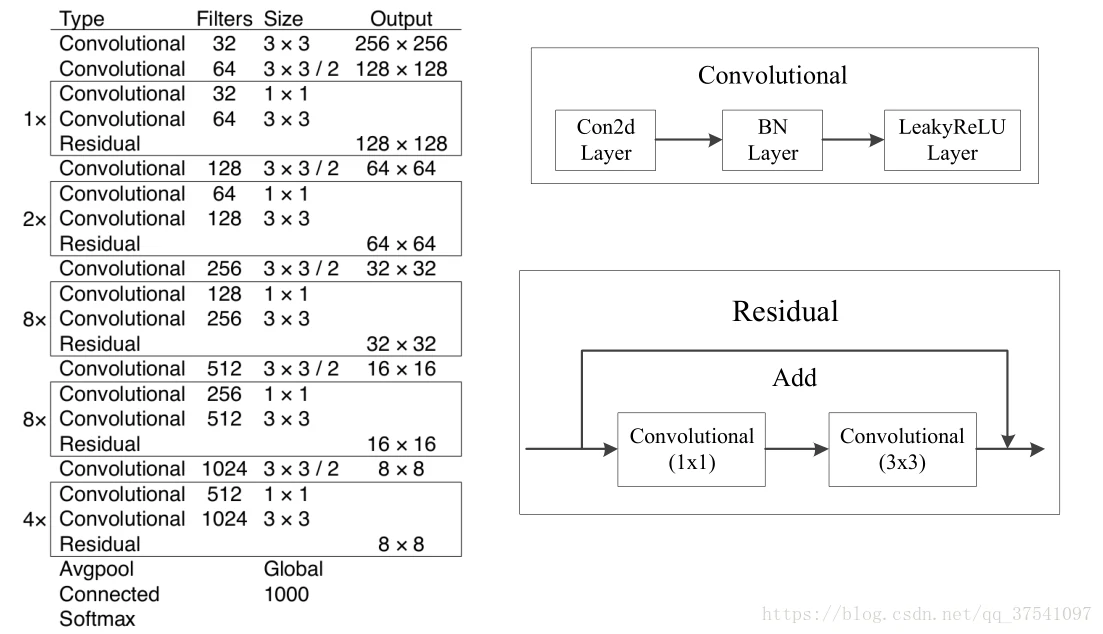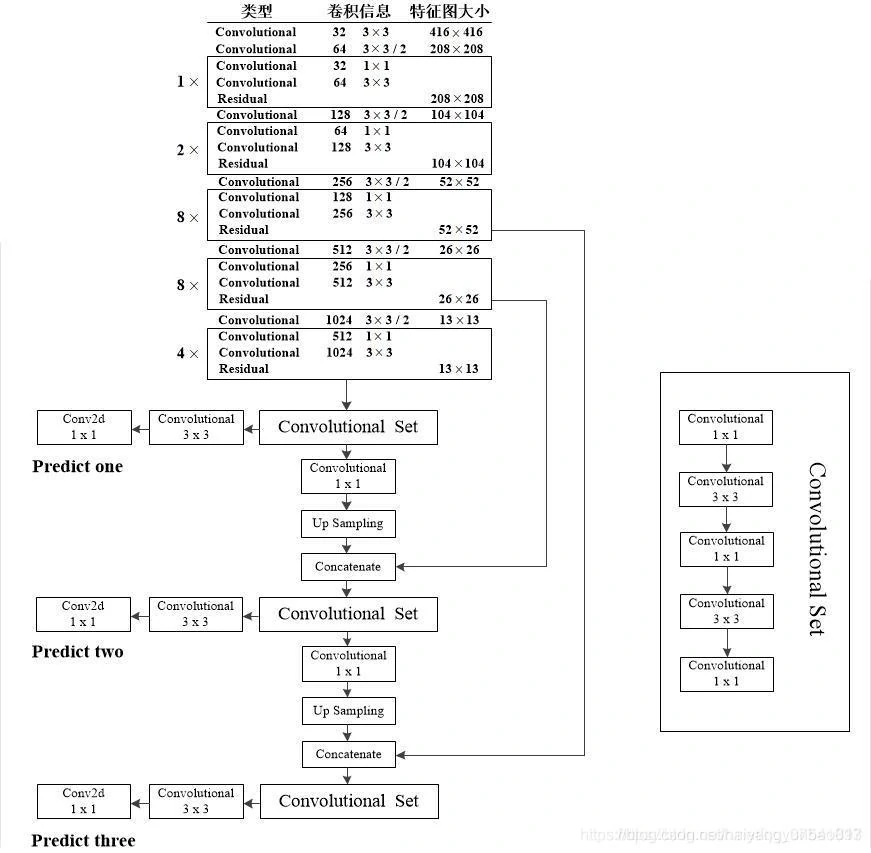1
2
3
4
5
6
7
8
9
10
11
12
13
14
15
16
17
18
19
20
21
22
23
24
25
26
27
28
29
30
31
32
33
34
35
36
37
38
39
40
41
42
43
44
45
46
47
48
49
50
51
52
53
54
55
56
57
58
59
60
61
62
63
64
65
66
67
68
69
70
71
72
73
74
75
76
77
78
79
80
81
82
83
84
85
86
87
88
89
90
91
92
93
94
95
96
97
98
99
100
101
102
103
104
105
106
107
108
109
110
111
112
113
114
115
116
117
118
119
120
121
122
123
124
125
126
127
128
129
130
131
132
133
134
135
136
137
138
139
140
141
142
143
144
145
146
147
148
149
150
151
152
153
154
155
156
157
158
159
160
161
162
163
164
165
166
167
168
169
170
171
172
173
174
175
176
177
178
179
180
181
182
183
184
185
186
187
188
189
190
191
192
193
194
195
196
197
198
199
200
201
202
203
204
205
206
207
208
209
210
211
212
213
214
215
216
217
218
219
220
221
222
223
224
225
226
227
228
229
230
231
232
233
234
235
236
237
238
239
240
241
242
243
244
245
246
247
248
249
250
251
252
253
254
255
256
257
258
259
260
| import numpy as np
import tensorflow as tf
def convolutional(input_layer, filters_shape, downsample=False, activate=True, bn=True):
'''卷积层'''
if downsample:
input_layer = tf.keras.layers.ZeroPadding2D(((1, 0), (1, 0)))(input_layer)
padding = 'valid'
strides = 2
else:
strides = 1
padding = 'same'
conv = tf.keras.layers.Conv2D(filters=filters_shape[-1],
kernel_size=filters_shape[0],
strides=strides,
padding=padding,
use_bias=not bn,
kernel_regularizer=tf.keras.regularizers.l2(0.0005),
kernel_initializer=tf.random_normal_initializer(stddev=0.01),
bias_initializer=tf.constant_initializer(0.))(input_layer)
if bn:
conv = tf.keras.layers.BatchNormalization()(conv)
if activate:
conv = tf.keras.layers.LeakyReLU(alpha=0.1)(conv)
return conv
def residual_block(input_layer, filters_num1, filters_num2):
"""
:param input_layer: 残差块的输入特征图
:param filters_num1: 第一个卷积层的卷积核数量
:param filters_num2: 第二个卷积层的卷积核数量
:return:
"""
'''残差块'''
short_cut = input_layer
conv = convolutional(input_layer, filters_shape=(1, 1, input_layer.shape[-1], filters_num1))
conv = convolutional(conv, filters_shape=(3, 3, filters_num1, filters_num2))
residual_output = short_cut + conv
return residual_output
def darknet53(input_data):
"""
:param input_data:
:return: 阶段输出一, 阶段输出二, 最终输出
"""
'''Darknet-53主干网络'''
input_data = convolutional(input_data, (3, 3, 3, 32))
input_data = convolutional(input_data, (3, 3, 32, 64), downsample=True)
for i in range(1):
input_data = residual_block(input_data, 32, 64)
input_data = convolutional(input_data, (3, 3, 64, 128), downsample=True)
for i in range(2):
input_data = residual_block(input_data, 64, 128)
input_data = convolutional(input_data, (3, 3, 128, 256), downsample=True)
for i in range(8):
input_data = residual_block(input_data, 128, 256)
route_1 = input_data
input_data = convolutional(input_data, (3, 3, 256, 512), downsample=True)
for i in range(8):
input_data = residual_block(input_data, 256, 512)
route_2 = input_data
input_data = convolutional(input_data, (3, 3, 512, 1024), downsample=True)
for i in range(4):
input_data = residual_block(input_data, 512, 1024)
return route_1, route_2, input_data
def yolo_convolutional(input_layer, filters_shape):
'''Yolo卷积层'''
conv = convolutional(input_layer, filters_shape)
conv = tf.keras.layers.Conv2D(filters=3 * (4 + 1 + 80),
kernel_size=(1, 1),
strides=(1, 1),
padding='same',
use_bias=True,
kernel_initializer=tf.random_normal_initializer(stddev=0.01),
bias_initializer=tf.constant_initializer(0.))(conv)
return conv
def decode(conv_output, num_classes, anchors, i=0):
"""
return tensor of shape [batch_size, output_size, output_size, anchor_per_scale, 5 + num_classes]
contains (x, y, w, h, score, probability)
"""
conv_shape = tf.shape(conv_output)
batch_size = conv_shape[0]
output_size = conv_shape[1]
conv_output = tf.reshape(conv_output, (batch_size, output_size, output_size, 3, 5 + num_classes))
conv_raw_dxdy = conv_output[:, :, :, :, 0:2]
conv_raw_dwdh = conv_output[:, :, :, :, 2:4]
conv_raw_conf = conv_output[:, :, :, :, 4:5]
conv_raw_prob = conv_output[:, :, :, :, 5:]
y = tf.tile(tf.range(output_size, dtype=tf.int32)[:, tf.newaxis], [1, output_size])
x = tf.tile(tf.range(output_size, dtype=tf.int32)[tf.newaxis, :], [output_size, 1])
xy_grid = tf.concat([x[:, :, tf.newaxis], y[:, :, tf.newaxis]], axis=-1)
xy_grid = tf.tile(xy_grid[tf.newaxis, :, :, tf.newaxis, :], [batch_size, 1, 1, 3, 1])
xy_grid = tf.cast(xy_grid, tf.float32)
pred_xy = (tf.sigmoid(conv_raw_dxdy) + xy_grid) * 32.0
pred_wh = (tf.exp(conv_raw_dwdh) * anchors[i]) * 32.0
pred_xywh = tf.concat([pred_xy, pred_wh], axis=-1)
pred_conf = tf.sigmoid(conv_raw_conf)
pred_prob = tf.sigmoid(conv_raw_prob)
return tf.concat([pred_xywh, pred_conf, pred_prob], axis=-1)
def YoloV3(input_layer, NUM_CLASS):
"""
:param input_layer: 输入层[416, 416, 3]
:param NUM_CLASS: 类别数量
:return: YoloV3模型
"""
'''YoloV3模型'''
route_1, route_2, conv = darknet53(input_layer)
'''Convolution Set'''
conv = convolutional(conv, (1, 1, 1024, 512))
conv = convolutional(conv, (3, 3, 512, 1024))
conv = convolutional(conv, (1, 1, 1024, 512))
conv = convolutional(conv, (3, 3, 512, 1024))
conv = convolutional(conv, (1, 1, 1024, 512))
''' Convolution Set '''
conv_lobj_branch = convolutional(conv, (3, 3, 512, 1024))
conv_lbbox = yolo_convolutional(conv_lobj_branch, (1, 1, 1024, 3 * (NUM_CLASS + 5)))
conv = convolutional(conv, (1, 1, 512, 256))
conv = tf.keras.layers.UpSampling2D(2)(conv)
conv = tf.concat([conv, route_2], axis=-1)
''' Convolution Set '''
conv = convolutional(conv, (1, 1, 768, 256))
conv = convolutional(conv, (3, 3, 256, 512))
conv = convolutional(conv, (1, 1, 512, 256))
conv = convolutional(conv, (3, 3, 256, 512))
conv = convolutional(conv, (1, 1, 512, 256))
''' Convolution Set '''
conv_mobj_branch = convolutional(conv, (3, 3, 256, 512))
conv_mbbox = yolo_convolutional(conv_mobj_branch, (1, 1, 512, 3 * (NUM_CLASS + 5)))
conv = convolutional(conv, (1, 1, 256, 128))
conv = tf.keras.layers.UpSampling2D(2)(conv)
conv = tf.concat([conv, route_1], axis=-1)
''' Convolution Set '''
conv = convolutional(conv, (1, 1, 384, 128))
conv = convolutional(conv, (3, 3, 128, 256))
conv = convolutional(conv, (1, 1, 256, 128))
conv = convolutional(conv, (3, 3, 128, 256))
conv = convolutional(conv, (1, 1, 256, 128))
''' Convolution Set '''
conv_sobj_branch = convolutional(conv, (3, 3, 128, 256))
conv_sbbox = yolo_convolutional(conv_sobj_branch, (1, 1, 256, 3 * (NUM_CLASS + 5)))
return [conv_sbbox, conv_mbbox, conv_lbbox]
def YoloLoss(output_size, num_classes, anchors):
'''Yolo损失函数'''
def yolo_loss(y_true, y_pred):
pred_xywh = y_pred[..., :4]
pred_conf = y_pred[..., 4:5]
pred_prob = y_pred[..., 5:]
true_xywh = y_true[..., :4]
true_conf = y_true[..., 4:5]
true_prob = y_true[..., 5:]
true_xy = true_xywh[..., :2]
true_wh = true_xywh[..., 2:4]
pred_xy = pred_xywh[..., :2]
pred_wh = pred_xywh[..., 2:4]
intersect_wh = tf.maximum(tf.minimum(pred_xy + pred_wh / 2, true_xy + true_wh / 2) - tf.maximum(pred_xy - pred_wh / 2, true_xy - true_wh / 2), 0)
intersect_area = intersect_wh[..., 0] * intersect_wh[..., 1]
true_area = true_wh[..., 0] * true_wh[..., 1]
pred_area = pred_wh[..., 0] * pred_wh[..., 1]
union_area = pred_area + true_area - intersect_area
iou = intersect_area / union_area
best_iou = tf.reduce_max(iou, axis=-1)
mask = tf.cast(best_iou < 0.5, dtype=tf.float32)
xy_loss = tf.reduce_sum(tf.square(true_xy - pred_xy) * true_conf * mask) / tf.reduce_sum(true_conf * mask + 1e-6) * 2.0
wh_loss = tf.reduce_sum(tf.square(true_wh - pred_wh) * true_conf * mask) / tf.reduce_sum(true_conf * mask + 1e-6) * 2.0
obj_loss = tf.reduce_sum(tf.square(true_conf - pred_conf) * true_conf * mask) / tf.reduce_sum(true_conf * mask + 1e-6)
no_obj_loss = tf.reduce_sum(tf.square(true_conf - pred_conf) * (1.0 - true_conf) * (1.0 - mask)) / tf.reduce_sum((1.0 - true_conf) * (1.0 - mask) + 1e-6)
class_loss = tf.keras.losses.sparse_categorical_crossentropy(y_true[..., 5:], y_pred[..., 5:])
class_loss = tf.reduce_sum(class_loss * true_conf) / tf.reduce_sum(true_conf + 1e-6)
return xy_loss + wh_loss + obj_loss + no_obj_loss + class_loss
return yolo_loss
anchors = np.array([(10, 13), (16, 30), (33, 23), (30, 61), (62, 45),
(59, 119), (116, 90), (156, 198), (373, 326)], np.float32) / 416.0
input_layer = tf.keras.layers.Input([416, 416, 3])
num_classes = 13
output = YoloV3(input_layer, num_classes)
model = tf.keras.Model(input_layer, output)
model.compile(optimizer=tf.keras.optimizers.Adam(learning_rate=1e-3),
loss=[YoloLoss(13, 80, anchors), YoloLoss(26, 80, anchors), YoloLoss(52, 80, anchors)])
model.summary()
model.save('yolov3_model.h5')
|





